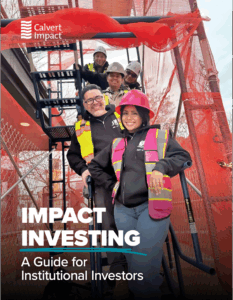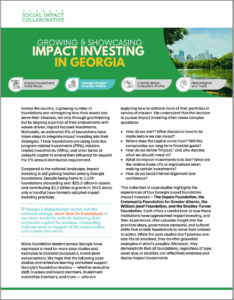Across the country, a growing number of foundations are reimagining how their assets can serve their missions, not only through grantmaking but by aligning a portion of their endowments with values-driven, impact-focused investments. Nationally, an estimated 5% of foundations have taken steps to integrate impact investing into their strategies. These foundations are using tools like program-related investments (PRIs), mission-related investments (MRIs), and other forms of catalytic capital to extend their influence far beyond the 5% annual distribution requirement.
Compared to the national landscape, impact investing is still gaining traction among Georgia foundations. Despite being home to 1,639 foundations stewarding over $25.3 billion in assets and contributing $2.2 billion in grants, only a handful have formally adopted impact investing practices.
If Georgia’s philanthropic sector met the national average, more than 80 foundations in our state would be actively deploying their investable capital for mission—channeling millions more in support of the communities and causes they serve.
Many foundation leaders across Georgia have expressed a need for more case studies and examples to kickstart purposeful, board-level conversations. We hope that the following case studies and reflective learning worksheet support Georgia’s foundation leaders — whether executive staff, trustees and board members, investment committee members, and more — who are exploring how to activate more of their portfolios in service of mission. We understand that the decision to pursue impact investing often raises complex questions:
- How do we start? What decisions have to be made before we can invest?
- Where does the capital come from? Will this compromise our long-term financial goals?How do we define “impact,” and who decides what we should invest in?
- What do impact investments look like? What are the relative trade-offs or implications when making certain investments?
- How do we build internal alignment and confidence?
This collection of case studies highlights the experiences of four Georgia-based foundation impact investors – The Sapelo Foundation, the Community Foundation for Greater Atlanta, the William Josef Foundation, and the Bradley-Turner Foundation. Each offers a candid look at how these institutions have approached impact investing, and their experiences offer valuable insight into the practical steps, governance decisions, and cultural shifts that enable foundations to move from interest to action. While the case studies don’t promise one-size-fits-all solutions, they do offer grounded examples of what’s possible. Moreover, they demonstrate that all foundations, regardless of type, asset size, or location, can effectively embrace and deploy impact investments.


